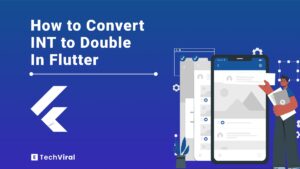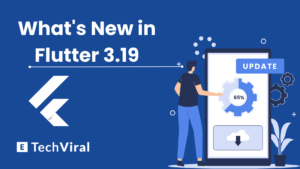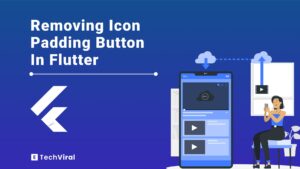In the fast-paced world of mobile application development, Flutter has emerged as a beacon for developers aiming to deliver high-quality, cross-platform applications efficiently.
However, integrating APIs—a cornerstone of modern mobile app functionality—poses challenges, especially when aiming for a clean, maintainable, and scalable architecture. Issues like code complexity, maintenance headaches, and scalability concerns can quickly become overwhelming.
This guide is crafted to address these challenges, offering in-depth insights into seamlessly integrating APIs in Flutter using clean architecture principles.
Common Problems and Our Solutions
| Problem | Solution |
| Code Complexity | Clean architecture to ensure separation of concerns. |
| Maintenance Headaches | Structured directory setup and dependency management. |
| Scalability Concerns | Utilizing clean architecture for modular, scalable code. |
| API Integration Challenges | Step-by-step guide on implementing network calls efficiently. |
| Testing Difficulties | Strategies for unit and integration testing within this framework. |
By the end of this guide, you’ll be equipped with the knowledge to tackle these challenges head-on, ensuring your Flutter applications are not only functional but also robust and future-proof.
Key Takeaways
- Embrace clean architecture for a robust, scalable app structure.
- Prioritize security and performance optimization in API integration.
- Commit to thorough testing and proactive troubleshooting to enhance reliability.
- Stay engaged with ongoing learning and community collaboration for continuous improvement.
Understanding Flutter and Clean Architecture
Flutter and clean architecture together form a powerful duo for building scalable, maintainable mobile applications. Let’s break down these concepts and understand why integrating APIs within this framework is beneficial for your projects.
Why Integrate APIs with Clean Architecture in Flutter?
Integrating APIs with clean architecture in Flutter offers significant advantages that address common development challenges:
Modularity
Clean architecture organizes the application into layers, each with a distinct responsibility. This separation allows for more modular code, where API integration logic is cleanly separated from the UI and business logic layers. Such modularity facilitates easier updates, testing, and maintenance.
Flexibility and Scalability
As applications grow, the need to add or modify features without disrupting existing functionality becomes critical. Clean architecture provides a flexible foundation that can accommodate new API integrations or changes to existing ones with minimal impact on the overall system. This scalability ensures that the application can evolve to meet user needs and technological advancements.
Testability
With clean architecture, the core logic of the application, including the interactions with APIs, can be tested independently of the UI or database. This isolation improves the testability of the code, making it possible to verify the application’s behavior under various conditions without the need for complex setups.
Improved Maintainability
The clear boundaries established by clean architecture make the codebase easier to understand and navigate. Developers can quickly identify where API calls are made, how data is processed, and where it impacts the application. This clarity reduces the time and effort required for debugging and enhancing the application.
Enhanced Performance and User Experience
By optimizing how and when API calls are made, developers can ensure efficient data retrieval and minimize latency. Clean architecture facilitates strategies such as caching and lazy loading, improving the application’s performance and responsiveness, which, in turn, enhances the user experience.
Setting Up Your Flutter Environment for API Integration
Before diving into the intricacies of integrating APIs in Flutter using clean architecture, it’s essential to set up your development environment properly. This setup is crucial for a smooth development process and ensures that your application is built on a solid foundation.
Prerequisites for Flutter Development
To get started with Flutter, you’ll need to have a few tools and software installed on your development machine:
Flutter SDK
The core of Flutter development, the SDK contains the Flutter engine, widget libraries, and tools to compile your code into native machine code.
Development IDE
While you can use any text editor, IDEs like Android Studio or Visual Studio Code are recommended for their Flutter plugin support, which offers code completion, widget editing assists, and a suite of other handy development tools.
Dart Plugin
Since Flutter apps are written in Dart, installing the Dart plugin in your IDE is essential for syntax highlighting, code analysis, and other features.
Flutter Plugin
This plugin adds Flutter-specific functionality to your IDE, including the Flutter widget inspector and the ability to run and debug Flutter applications directly from the IDE.
Ensure your development environment meets these prerequisites before moving forward with setting up Flutter clean architecture for API integration.
Introduction to Flutter Clean Architecture Setup
Adopting clean architecture in your Flutter project involves organizing your code into distinct layers, each with a specific role. Here’s a basic structure to get started:
- Presentation Layer: Contains UI-related code, such as widgets and screens, and manages user input and display output. It communicates with the domain layer to request and display data.
- Domain Layer: Acts as an intermediary between the presentation and data layers. It contains business logic and use cases, defining how data should be fetched, processed, and returned.
- Data Layer: Manages data transactions, including API calls, data caching, and database access. It’s responsible for fetching data from external sources and serving it to the domain layer.
To set up a clean architecture in your Flutter project, follow these steps:
- Create a New Flutter Project: Start by creating a new Flutter project in your IDE.
- Directory Structure: Organize your project into directories reflecting the clean architecture layers (lib/presentation, lib/domain, lib/data).
- Dependencies: Add necessary dependencies in your pubspec.yaml file for network requests (http, dio), state management (provider, bloc, riverpod), and any other utilities you might need.
- Implementation: Begin by implementing the data layer with models to represent your data and repositories to manage API calls. Then, define use cases in your domain layer to interact with the data layer. Finally, build your UI in the presentation layer, ensuring it communicates with the domain layer to handle data.
Setting up your Flutter environment with a focus on clean architecture not only prepares you for effective API integration but also ensures that your application is built with best practices in mind, leading to a maintainable, scalable, and testable codebase.
Integrating APIs in Flutter Using Clean Architecture
Integrating APIs into your Flutter application using clean architecture involves a thoughtful approach to ensure scalability, maintainability, and ease of testing. This section provides a step-by-step guide to effectively incorporate external data sources into your Flutter app.
What is API Integration? The Basics
APIs (Application Programming Interfaces) allow your application to communicate with external services and data sources, enabling a plethora of features from user authentication to fetching real-time data. For Flutter apps, integrating APIs is a cornerstone for adding dynamic content and functionalities.
- RESTful APIs: The most common type of API used in mobile app development. They use HTTP requests to GET, POST, PUT, and DELETE data.
- GraphQL APIs: An alternative to RESTful APIs, allowing clients to request exactly the data they need, making it efficient for complex systems.
Designing Your Flutter App with Clean Architecture
When integrating APIs following clean architecture, your app’s structure plays a pivotal role. Each layer has distinct responsibilities:
- Presentation Layer: Manages UI and user interactions, sending requests to the domain layer, and displaying the data received.
- Domain Layer: Contains business logic and use cases. It translates user actions into data requests or operations.
- Data Layer: Responsible for executing API calls, processing the data, and returning it to the domain layer.
This separation ensures that changes in one layer (e.g., UI changes in the presentation layer) don’t affect the business logic or data fetching mechanisms.
Step-by-Step Guide to Integrating APIs
1. Setting Up the Data Layer
- Define Models: Create Dart classes that represent the data structures returned by the API. Use packages like json_serializable for easy JSON serialization and deserialization.
- Implement Repository: The repository handles data operations, abstracting the source of the data (API, cache, or database). Define methods in the repository to fetch data from the API.
2. Domain Layer Implementation
- Define Use Cases: Use cases encapsulate specific business logic operations, calling methods from the repository to fetch or send data.
- Entity Classes: Sometimes, it’s beneficial to use domain-specific models (entities) that are separate from your data layer models, especially if you need to transform the data for the UI.
3. Presentation Layer Integration
- State Management: Choose a state management solution (e.g., Provider, BLoC, Riverpod) to manage the state based on the data fetched from the domain layer.
- Build UI: Create widgets that display the data, implementing loading states and error handling based on the app’s state.
4. Handling API Responses
- Error Handling: Implement error handling in the data layer, ensuring that the app can gracefully manage failed API calls.
- Data Caching: For improved performance and offline usage, consider caching API responses either in memory or using a local database like SQLite.
5. Testing
- Unit Tests: Write tests for your models, repositories, and use cases to ensure they handle data correctly.
- Integration Tests: Test the integration between layers and with the actual API to validate the complete workflow.
Best Practices for Integrating APIs in Flutter Using Clean Architecture
Integrating APIs into your Flutter application is more than just fetching and displaying data. Following best practices can significantly enhance app performance, security, and user experience. Here, we’ll explore essential strategies to make your API integration more effective and reliable.
Securing API Calls
Security is paramount when dealing with API integration, especially if sensitive data is involved. Here are key considerations to secure your API calls:
- Use HTTPS: Always use HTTPS instead of HTTP to encrypt data transmitted between the app and the server. This prevents man-in-the-middle attacks and ensures data integrity.
- Authentication and Authorization: Implement robust authentication mechanisms, such as OAuth 2.0, to control access to your API. Tokens or API keys should be securely stored and managed within the app.
- Validate Input and Output Data: Ensure that all data sent to and received from the API is validated to prevent injection attacks or data corruption.
Optimizing API Performance
Optimizing the performance of your API calls is crucial for a smooth user experience, particularly in mobile applications where network conditions can vary.
- Efficient Data Fetching: Only request the data you need. Use techniques like pagination, filtering, and selective field queries (especially in GraphQL APIs) to minimize the payload size.
- Caching: Implement caching mechanisms to store API responses temporarily. This reduces the number of API calls needed, speeding up load times and reducing data usage.
- Concurrency and Throttling: Manage the number of concurrent API calls and implement throttling to prevent overwhelming the server and degrading the app’s performance.
Testing Your API Integration
Testing is an integral part of the development process, ensuring that your API integration works as expected and handles edge cases and errors gracefully.
- Unit Tests: Test individual components, such as model serialization/deserialization, repository methods, and use cases. Mock dependencies to isolate tests for more predictable outcomes.
- Integration Tests: Test the interaction between components and with the actual API. This includes testing the complete flow from initiating an API call in the presentation layer to data fetching in the data layer and rendering the response in the UI.
- Automated Testing Tools: Utilize tools like Postman for API testing and Flutter’s own testing framework for unit and integration tests. Consider continuous integration (CI) pipelines to automate testing processes.
Implementing these best practices not only improves the quality and reliability of your Flutter application but also enhances the development and maintenance experience. By focusing on security, performance optimization, and rigorous testing, you can create Flutter apps that stand out for their robustness and user-friendly experience.
Tips from Industry Experts
- Before diving into code, plan your app’s architecture. Clean architecture might seem overkill for small projects, but it pays off as your app grows.
- Performance optimizations, such as caching and efficient data fetching, directly impact user satisfaction. Always consider how API interactions affect the app’s responsiveness.
- Regular testing, especially when dealing with external APIs, can save time and prevent issues in production. Automated tests are your best friend in long-term maintenance.
- Secure API keys and sensitive data carefully. Use environment variables and secure storage options to protect your app and its users.
- API specifications can change. Keep your app adaptable by staying informed about API updates and deprecated endpoints.
Troubleshooting Common Issues in API Integration
Integrating APIs into Flutter applications can sometimes lead to unexpected issues. Understanding how to diagnose and resolve these common problems is crucial for maintaining a smooth development process and ensuring a high-quality user experience. This section covers troubleshooting strategies for common API integration challenges.
Debugging API Integration Errors
Issue: API Calls Failing or Returning Unexpected Data
- Solution: Verify the API endpoint and request parameters. Use tools like Postman to test the API independently of your Flutter code. Ensure headers, method type (GET, POST, etc.), and body content are correctly configured. Check the API documentation for any changes or updates.
Issue: Handling JSON Serialization/Deserialization Errors
- Solution: Confirm that the model classes in your Flutter app match the JSON structure returned by the API. Tools like json_serializable can automate model generation from JSON, reducing manual errors. Validate the JSON response with online validators to catch any inconsistencies.
Issue: Slow API Response Times
- Solution: Optimize API performance by implementing caching strategies, reducing the size of data requests (e.g., pagination, selective querying), and ensuring efficient data processing in the app. If the issue persists, consult the API provider for any server-side limitations or issues.
Optimizing API Usage and Limitations
Challenge: API Rate Limiting
- Solution: Many APIs impose rate limits to prevent abuse. Implement caching to reduce the number of requests. Strategically plan your requests to stay within the limits, and consider requesting higher rate limits from the API provider if necessary.
Challenge: Managing Sensitive Data and API Keys
- Solution: Never hard-code sensitive information like API keys in your application’s source code. Use environment variables and secure storage solutions to protect these credentials. For Flutter, packages like flutter_secure_storage provide a secure way to store sensitive data on the device.
Challenge: Ensuring Cross-Platform Compatibility
- Solution: When working with APIs in a cross-platform framework like Flutter, test your app on both iOS and Android platforms to identify and resolve platform-specific issues, such as different networking behaviors or security policies.
Conclusion
Integrating APIs in Flutter using clean architecture is a pivotal skill for modern app development, ensuring your projects are scalable, maintainable, and secure.
This guide has equipped you with the foundational knowledge to set up your environment, structure your project, and seamlessly integrate APIs, all while adhering to best practices for security, performance, and testing.
As you venture forward, leverage these insights to refine your Flutter development process, embracing challenges as opportunities for growth. The journey of learning never ends—keep exploring, experimenting, and sharing your discoveries.
FAQ’s
How do I connect the API to Flutter?
To connect an API to Flutter, use the http package. First, add the package to your pubspec.yaml file. Then, import it into your Dart file. Use http.get() for GET requests or http.post() for POST requests to communicate with the API, passing the URL and any necessary headers or body data.
How do I integrate the login API in Flutter?
Integrate a login API in Flutter by sending user credentials (usually email and password) to the login endpoint of your API using http.post(). Handle the response by checking for a success status and extracting tokens or user data, which you can then use to authenticate further requests or navigate the user to the main content of your app.
How do you pass an API in Flutter?
Pass API data in Flutter by making a request to your API using the http package with either http.get(), http.post(), or other HTTP methods. Retrieve the response, which usually comes in JSON format, and convert it into a Dart object using the json.decode() method. You can then use this data in your Flutter widgets.
How do I call the local API in Flutter?
To call a local API in Flutter, ensure your API server is running on your local machine. Use your local IP address (e.g., http://192.168.x.x:port/endpoint) when making requests with the http package. If you’re using an emulator, you might need to use specific IP addresses (like 10.0.2.2 for Android emulators) to access your local server.
How do I add an API key to Flutter?
Add an API key to Flutter requests by including it in the headers of your HTTP request. Use the http package to create your request, and add a headers map with your API key, usually under headers like Authorization or a custom header as required by your API provider. Keep your API key secure and do not hard-code it in your app’s source code.
How to Create an API?
Creating an API involves several steps:
- Define the purpose and the data your API will handle.
- Choose the technology stack for building your API (e.g., Node.js, Flask for Python).
- Set up your server and database to store and manage the data.
- Code your API endpoints to perform CRUD operations (Create, Read, Update, Delete).
- Secure your API with authentication methods like OAuth, API keys, or JWTs.
- Test your API with tools like Postman or Swagger.
- Document your API for developers to understand how to use it.











